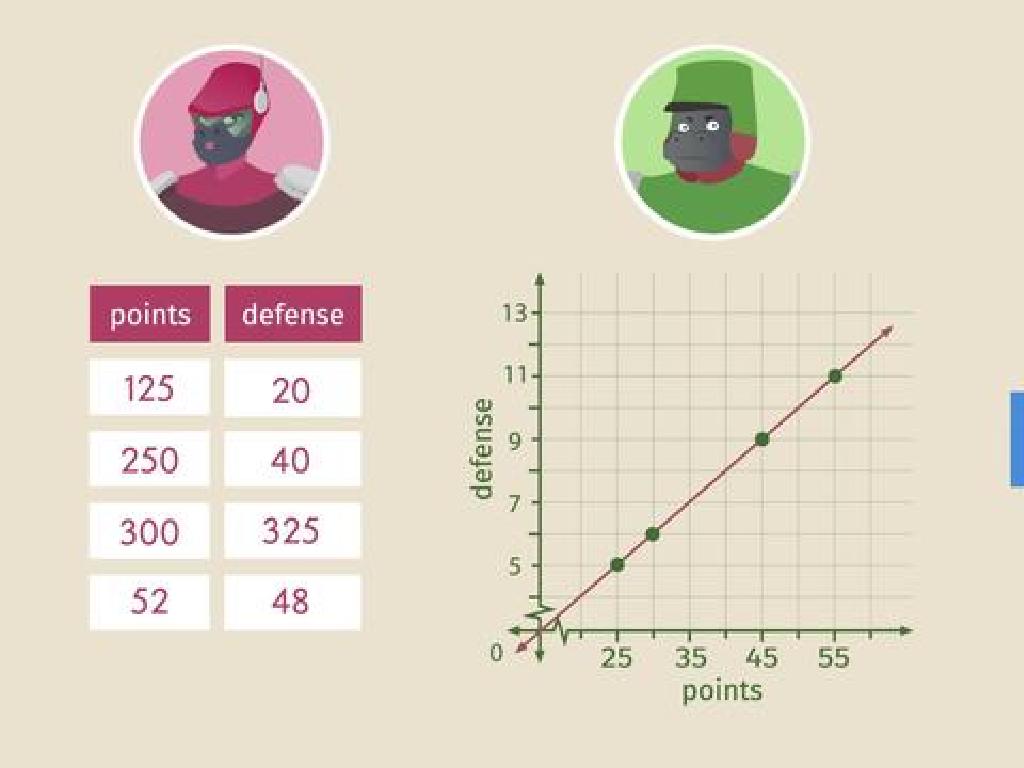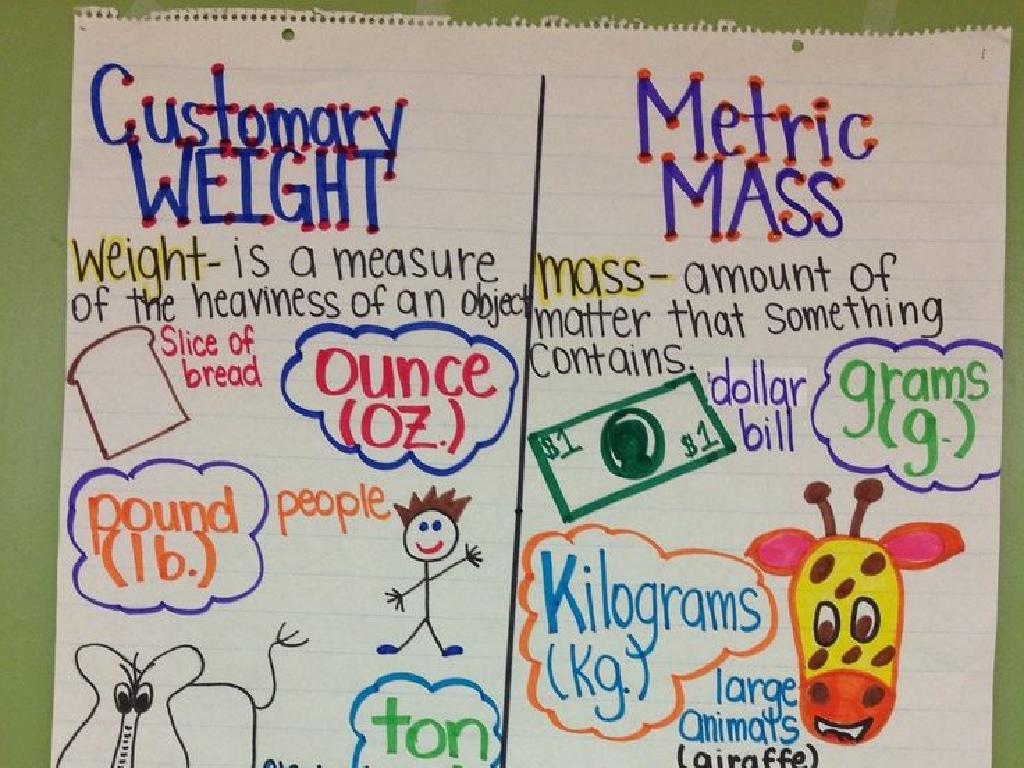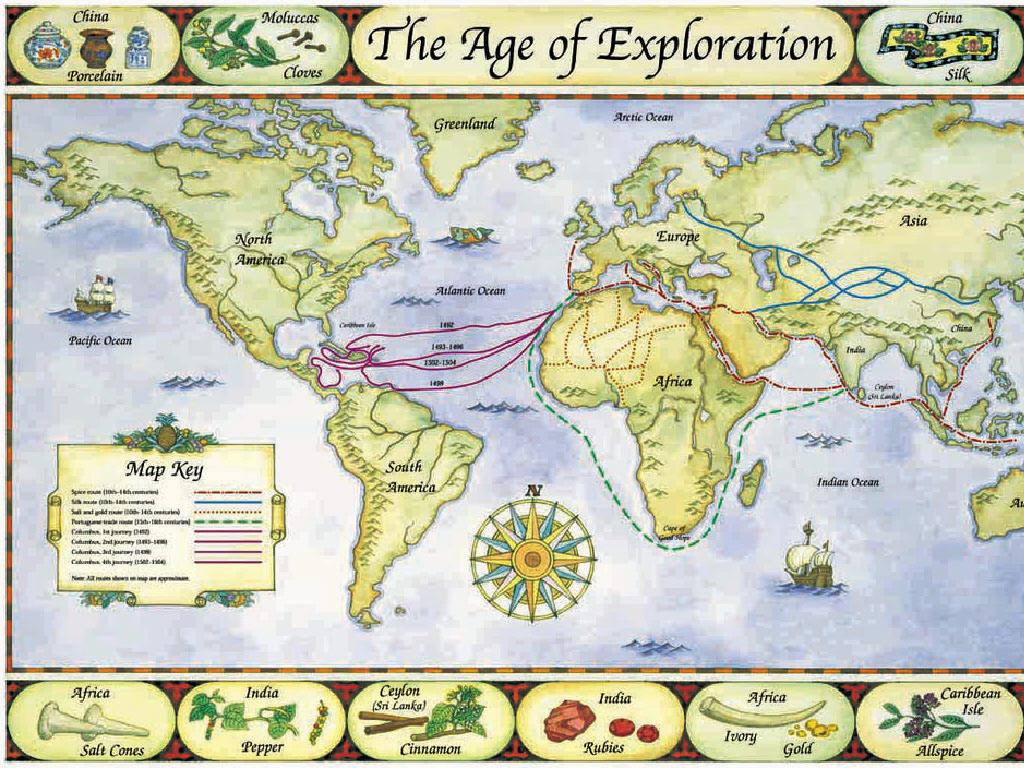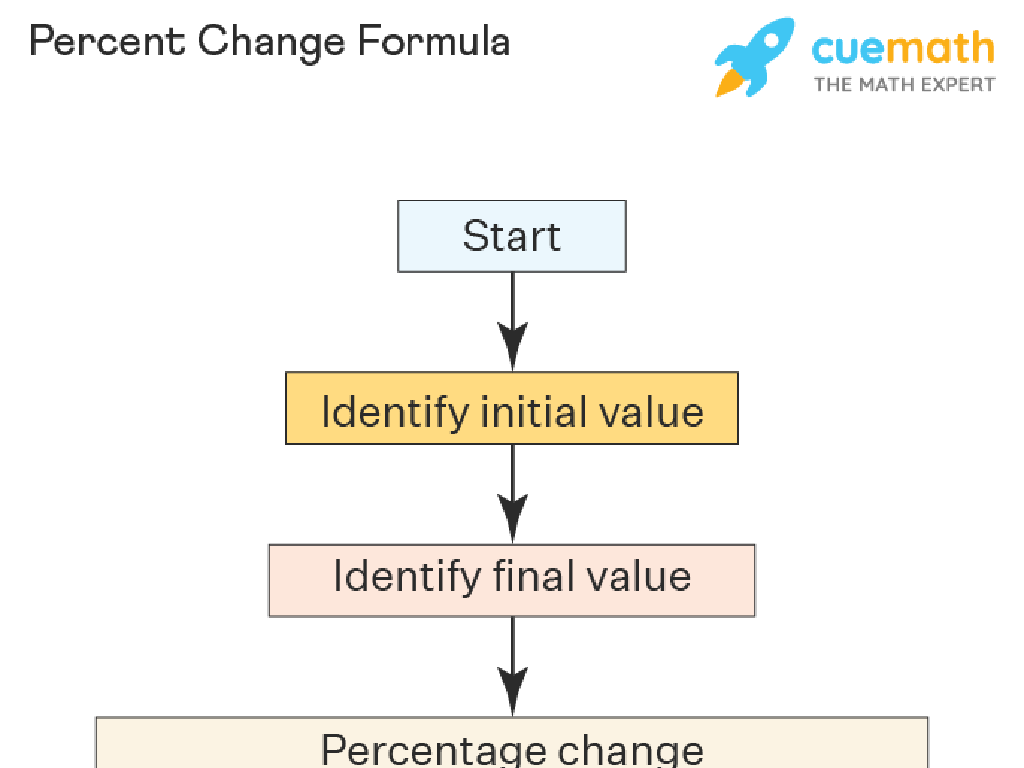Solve A System Of Equations By Graphing: Word Problems
Subject: Math
Grade: Eighth grade
Topic: Systems Of Equations
Please LOG IN to download the presentation. Access is available to registered users only.
View More Content
Solving Systems of Equations by Graphing
– Define systems of equations
– A set of two or more equations with the same variables
– Systems in real-life contexts
– Used for budgeting, planning trips, or even in sports strategies
– Graphing method overview
– Plot each equation on a graph and find where they intersect
– Example: Intersection point
– E.g., where do the graphs of y = 2x + 3 and y = -x + 5 intersect?
|
This slide introduces the concept of systems of equations, which are fundamental in algebra and applicable in various real-life situations. Emphasize the importance of understanding how to find the point of intersection between two lines, as this represents the solution to the system. Use real-world examples like budgeting, where income and expenses can be represented by equations, or sports, where strategies can be analyzed through systems. The graphing method is visual and intuitive, allowing students to see the solution clearly. Provide a simple example to illustrate the concept, such as finding the intersection of two lines, which will be the focus of the next class discussion.
Understanding Systems of Equations
– Define a system of equations
– A set of two or more equations with the same variables
– Examples of linear equation systems
– e.g., y = 2x + 3 and y = -x + 5 form a system
– Solutions to systems of equations
– The solution is where the graphs intersect
– Graphical representation
|
Introduce the concept of a system of equations as a set of two or more equations that share the same variables. Provide examples of linear equations that can be paired to form a system, emphasizing that each equation represents a line when graphed. Explain that the solution to a system of equations is the point or points where the graphs of the equations intersect, which represents the values that satisfy all equations in the system simultaneously. Demonstrate this concept by graphing a simple system on the board and identifying the intersection point. Encourage students to think of real-world situations that could be modeled by systems of equations, such as finding the break-even point for a business or determining the intersection of two paths.
Graphing Systems of Equations: Word Problems
– Review graphing single equations
– Recall y=mx+b and its graph on a grid
– Determine slope and y-intercept
– Slope (m) is rise over run, y-intercept (b) is where line crosses y-axis
– Plot equations on coordinate plane
– Use x and y values to plot points and draw the line
– Solve systems by finding intersections
– The point where two lines cross is the solution to the system
|
Begin with a quick review of graphing single linear equations to ensure students are comfortable with the basics. Emphasize the importance of identifying the slope (rise over run) and y-intercept (the point where the line crosses the y-axis) from the equation of a line in slope-intercept form (y=mx+b). Guide students through plotting equations on the coordinate plane, starting with the y-intercept and using the slope to find other points. Finally, demonstrate how the intersection of two lines on a graph represents the solution to a system of equations. Encourage students to practice with word problems that require them to write equations based on given information, graph them, and then find the point of intersection.
Solving Systems by Graphing
– Graph two linear equations
– Plot both equations on the same graph to find where they cross
– Intersection point as solution
– The coordinates where the lines intersect represent the solution
– Check solution with substitution
– Substitute the intersection’s coordinates into the original equations to verify
– Practice with word problems
|
This slide introduces students to solving systems of equations by graphing. Start by explaining how to graph two linear equations on the same set of axes. Emphasize the importance of finding the point of intersection accurately, as this represents the solution to the system. Once the intersection point is found, students should learn how to check their solution by substituting the x and y values back into the original equations. The solution is correct if both equations are satisfied. Encourage students to practice this method with various word problems to solidify their understanding. Provide examples that are relevant to their experiences to make the concept more engaging.
Translating Word Problems into Equations
– Convert problems to equation systems
– Read the problem, decide what x and y represent
– Identify variables and equations
– Set up two equations based on the problem
– Understand the question asked
– Look for keywords to comprehend the problem’s goal
– Tips for solving word problems
– Break down the problem, check units, and review steps
|
This slide introduces students to the process of translating word problems into systems of equations, a key skill in algebra. Start by reading the problem carefully and determining what the variables (x and y) will represent. Then, based on the information given, set up two equations that relate these variables. Teach students to look for keywords and phrases that indicate mathematical operations or relationships. Provide tips such as breaking down the problem into smaller parts, ensuring units are consistent, and reviewing each step logically. Encourage students to practice with examples and to not rush the process, as understanding the problem is crucial to finding the correct solution.
Solving Systems by Graphing: Word Problem
– Walk through a sample problem
– Example: Jamie buys 3 apples and 4 bananas for $11.25, 2 apples and 3 bananas for $7.50.
– Set up system of equations
– Let x represent apples and y bananas. 3x + 4y = 11.25, 2x + 3y = 7.50.
– Graph the equations
– Plot the equations on a graph to find where they intersect.
– Find the intersection point
– The solution is where the two lines cross, giving the price per apple and banana.
|
Begin with a relatable word problem involving a real-life scenario, such as buying fruit. Guide students to extract the relevant information and form a system of equations. Demonstrate how to graph each equation on the same set of axes and explain that the solution to the system is the point where the two lines intersect. This point represents the values that satisfy both equations simultaneously. Encourage students to check their solution by substituting the values back into the original equations. Provide additional practice problems for students to solve independently or in groups.
Graphing Systems of Equations: Practice
– Solve word problems
– Create systems of equations
– Formulate equations based on problem statements
– Graph the equations
– Plot the equations on a graph to find the intersection
– Discuss solutions as a class
– Share different solutions and methods used
|
This slide is designed for a class activity where students will apply their knowledge of systems of equations to solve word problems. They will start by translating the problems into systems of equations, then graph these equations to find the points of intersection, which represent the solutions. After graphing, students will engage in a class discussion to compare their solutions and methods. This activity will help solidify their understanding of how to approach and solve systems of equations through graphing. The teacher should prepare diverse word problems of varying difficulty and ensure that each student or group has a different set to work on. During the discussion, encourage students to explain their reasoning and how they interpreted the graphs. This will foster a deeper understanding and allow students to learn from each other’s approaches.
Class Activity: Graphing Systems of Equations
– Engage in a group problem-solving activity
– Graph your system of equations
– Use graph paper or digital tools to plot the equations
– Present your group’s solution
– Explain how you found the point of intersection
– Discuss various solving strategies
– Compare methods and learn from each other
|
This class activity is designed to foster collaborative learning as students work in groups to solve a real-world problem using systems of equations. Each group will graph their system on graph paper or a digital platform, find the point of intersection, and present their solution to the class. Encourage students to discuss the different approaches they took to solve the problem. Possible activities could include comparing prices at different cell phone plans, calculating the break-even point for a school fundraiser, or determining the intersection of two different walking paths. The goal is to help students understand the practical application of systems of equations and to appreciate the value of different problem-solving strategies.
Conclusion: Systems of Equations by Graphing
– Recap: Solving systems by graphing
– Review the steps to solve equations by graphing and finding the intersection point.
– Emphasize accuracy in plotting
– Accurate plotting ensures correct solutions. Double-check coordinates.
– Homework: 3 graphing word problems
– Apply today’s lesson to solve real-world problems. Show work on graph paper.
|
As we conclude today’s lesson, remind students of the key steps involved in solving systems of equations by graphing: plotting each equation on the same graph and identifying the intersection point as the solution. Stress the importance of plotting points accurately to ensure the correct solution is found. For homework, students are assigned three word problems that they must solve using the graphing method. This will reinforce their understanding and provide practical application of the concept. Encourage students to use graph paper for precision and to clearly show their work, including all steps taken to plot the equations and find the intersection. The homework will also serve as a good assessment of their grasp of the material covered in class.





